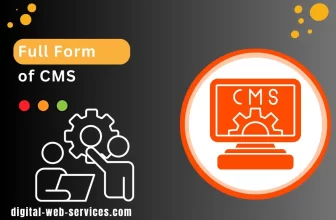
In an industry where your main focus is to create an excellent product experience for people using apps, products, and services, usability testing is necessary. The primary goal of usability testing is to understand the design perspective of an end-user.
UX researchers have developed numerous techniques for testing product design and helping them make decisions over the past years. Usability testing methods may be lab-based or those which have recently been developed. However, we aren’t here to provide you with a guide, you can read a usability testing guide by Maze if you are concerned about that, but today, we are more focused on usability testing methods.
Let’s not wait any further because, in this article, we will show you the seven website usability testing methods to get better results in your business.
7 Website Usability Testing Methods To Achieve Better Results
Guerilla Testing
Undoubtedly, we could say that Guerilla testing is the most simple form of usability testing. So, what exactly is guerilla testing? For example, you go to a lounge and start asking people about your prototype. Participants are chosen randomly and are asked to perform a quick usability testing for a small exchange which may be a free drink, a pen, or something else. Guerilla testing is a low-cost alternative and simple to conduct for honest user feedback.
You may be asking when the best time to use Guerilla testing is?
It’s during the early stages of the product development cycle. Usually, when you have a prototype, you can figure out early in the stage of development if you’re on the right path or not. Overall, Guerilla testing is excellent for collecting emotional impressions and personal opinions about ideas and more.
Additionally, it would help if you kept in mind that a participant in Guerilla testing may not be part of your target audience. Therefore, it may not be the best choice for testing niche products requiring special skills.
Furthermore, since guerilla testing will involve on-site participation, you need to prioritize all possible scenarios of interactions and select which may be the most probable one. Moreover, keep in mind that guerilla testing has a limited amount of time for every participant; the maximum amount of time you may get from each participant may be 5-10 minutes.
Moderated and unmoderated testing (lab usability testing)
Moderated testing
A trained researcher conducts a moderated testing session, presents the tests to respondents, answers any questions they may have, and asks follow-up questions after. Moderated testing is excellent for providing in-depth results thanks to the direct interaction between test participants and researchers. In addition, it allows you to understand better the issues your participants may face when interacting with your product.
However, moderated testing at the same time can be pretty expensive to run since it needs to be well organized, needs to be done in a lab, and has a professional researcher do the testing.
For example, if you’re testing a site for traveling, your participants should be people who often travel to give you more accurate feedback. However, you can consider hiring your employees for a test subject as well, but at the same time, it may lead to biased results since they are already familiar with your website interface. Therefore, it’s best to hire external users as well.
Unmoderated testing
Comparatively, unmoderated testing is done without any direct supervision, meaning that participants can be anywhere and browse through the site that is being tested. When we compare costs to moderated testing, they are much lower, but at the same time, follow-up questions are near impossible.
In simple words, you could use moderated testing to identify user behavior and unmoderated testing to measure specific behavior patterns.
When does unmoderated testing work best?
It works best when you need to validate your hypothesis from many users and help you assess user behavior patterns. However, unmoderated testing doesn’t go in-depth with participants’ reasons, so it’s not recommended to use as the first method of usability testing.
Phone interview testing
A phone interview testing involves a researcher asking questions to participants or instructing them over the phone from the word itself. This usability testing method is beneficial since it allows you to reach participants worldwide and gives you a broader perspective when conducting the test.
However, when you do phone interview testing, ensure to have trained researchers who can speak different languages. Don’t expect every participant abroad to speak your language or speak in English.
Contextual inquiry
Contextual inquiry is a less common usability testing method and more of an observational method that helps product teams obtain more information about the user experience from real users. The participants are asked a series of questions about their experience with a product.
When is the contextual inquiry testing method best to use?
Contextual inquiry is best used when you seek to get highly valuable information about users concerning their habits, personal preferences, and more. Gathering all of this helpful information right at the beginning will help your product design team carry out a better experience.
This testing method also works for shipped products and is excellent in testing a user’s satisfaction with a particular product.
Furthermore, you should remember if you choose to go with contextual inquiry testing to watch how your participants interact with your product and not provide any opinions during the test session.
Card sorting testing
Card sorting testing involves presting your participants with virtual cards representing various types of your website content. During the test, you ask participants to organize these cards, checking the logical thinking behind the participants’ decisions.
Moreover, this type of test allows you to understand users’ perspectives on how they see your website structure and helps developers figure out how they will organize their sites and make decisions based on test results.
When is card sorting best to use?
Card sorting is best to use when you want to make data-centric decisions and will help you decide on how you should organize your content. However, it would help validate this with your users as some changes may lead to a completely different outcome.
Session recordings
Session recordings use software to record actions made by real anonymous people on a website, such as scrolling, movements, clicks, and more. You can use session recordings to identify issues within your website’s functionality and watch how people interact with the site’s Call to Action (CTAs), when they leave, and more.
Session recordings are best to use when you want to identify the significant problems users have when they are interacting with your product. Moreover, session recordings are best used when mixing them with another usability testing method. You can identify the issues users face with your product, but you need another type of testing to understand why they are facing these issues entirely.
5- second test
The 5-second test includes uploading a screenshot of your webpage and asking the following questions:
- Who do you think the target audience is?
- What is the main element of the page you think was with you at all times?
Participants have 5 seconds to look at the web page before answering the following questions. Moreover, this is a simple and easy way of collecting large amounts of qualitative data about first impressions on your website.
Are A/B testing and usability testing the same thing?
UX professionals consider A/B testing to be the same as usability testing. However, even though they have similarities, it doesn’t mean they are the same. Usability testing focuses on the user’s experience and interactions with a product. On the other hand, A/B testing experiments with two or more page versions to see which one is better to use.
The main goal of A/B testing is to find which page will convert better, while usability testing focuses on eliminating the issues that stop users from having a pleasant user experience.
Wrapping it up
That’s all about this article. These are our seven website usability testing methods you can use. Each testing method achieves a different purpose, and while some may be better than the either, you need to identify which one best fits your business requirements. After all, each business is different and thus, will choose the testing methods that best work their requirements.
However, no matter which testing method you choose, always be flexible to change if you need to. Ensure your testing method is aligned with your resources and business goals. Depending on the testing method you use, make sure to find the right participants.
In short, identify which testing method fits your business, set the success rate of your task scenario, find participants, start the test, and when you are done with this all, don’t forget to analyze your results and make adjustments. Good luck!
Digital Web Services (DWS) is a leading IT company specializing in Software Development, Web Application Development, Website Designing, and Digital Marketing. Here are providing all kinds of services and solutions for the digital transformation of any business and website.










